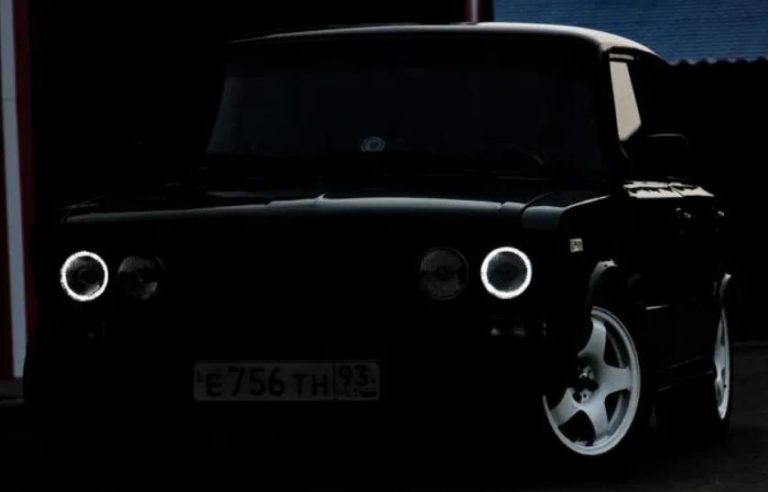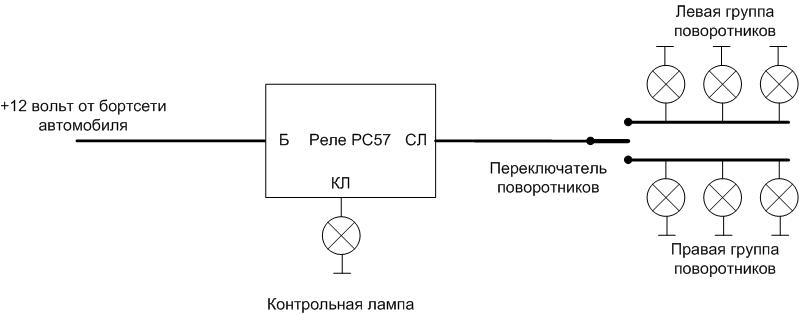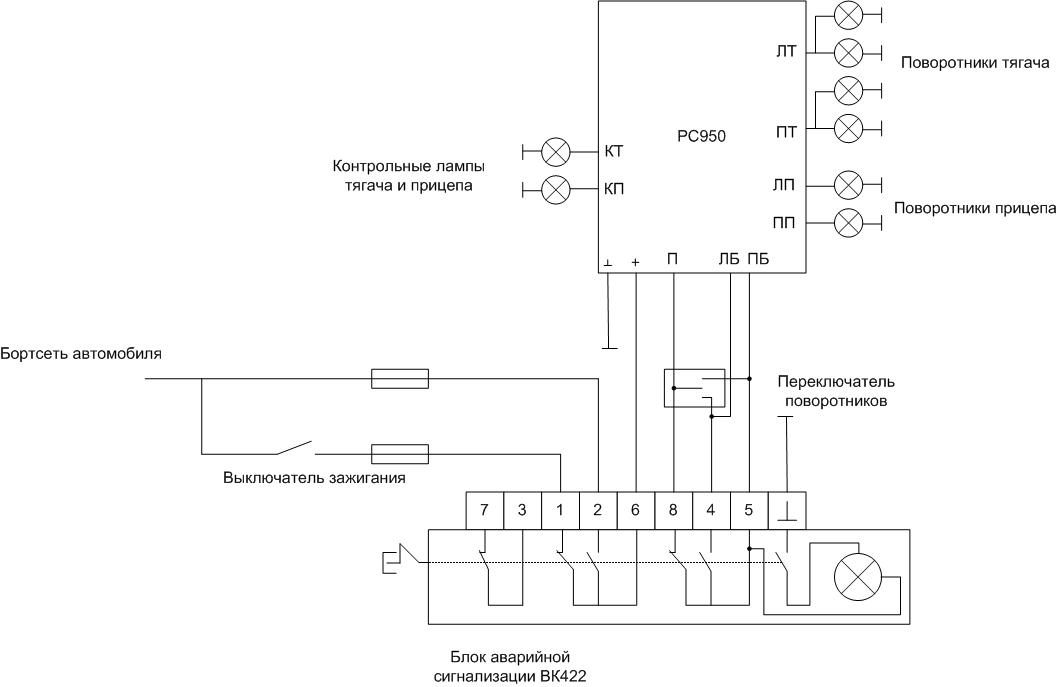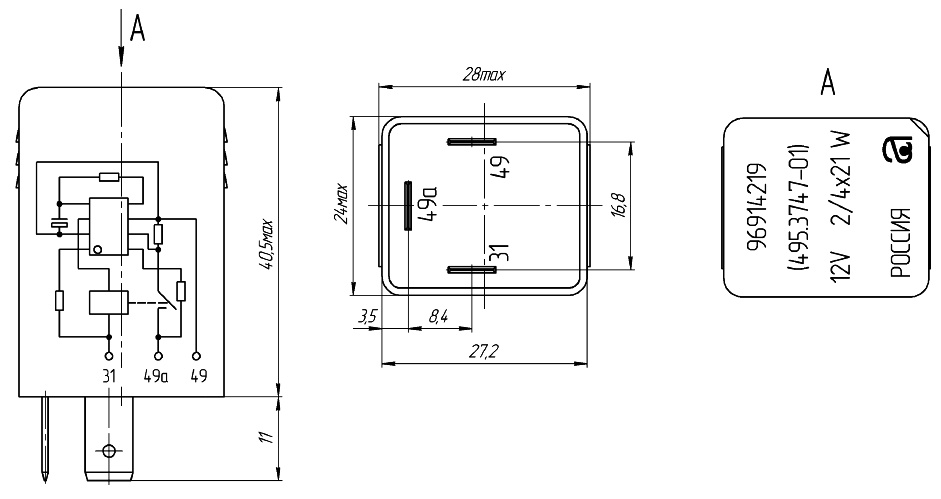Diagram and principle of operation of turn signals
Turn signals are stipulated by paragraphs 8.1 and 8.2 of traffic rules. Turn signals must be switched on not only before turning and shifting, but also before moving off or before stopping at the edge of the road. Failure to comply with these rules may lead to an accident, so there is a fine for failure to turn on the turn signals (Article 12.14 Part 1 of the CAO RF). The driver must monitor the technical condition of the turn signal system. For this purpose, knowledge of its structure comes in handy.
Principle of operation of turn signals
Turn signals (direction indicators) are an obligatory part of the lighting equipment of any vehicle. On each vehicle, they must be installed on both sides of the front and rear (on trailers - only rear) and are lights of orange color (in some countries red color is allowed). Before starting a maneuver (the exact distance or time is not regulated by the Traffic Code), the driver must turn on these lights on the side into which the turn will be made (in addition to the function of indicating the change of direction, the turning lights provide an emergency signal).
The lights must operate in flashing mode. This requirement is related to the peculiarities of human perception - we notice better not the intensity (brightness) of the signal, but its change. That is why a flashing lantern draws attention to itself faster, even if it is seen with the peripheral vision. In addition, it is more difficult to confuse it with parking lights or other lighting equipment. The intermittent glow in the most modern cars is provided by electronic units that include other operational functions. In cars developed in the past (and most of them), the flashing function is provided by interrupter relays.
How the relay should work properly
The basic requirement for a breaker relay is to form an intermittent electrical signal with frequency of 30-12 Hz to feed the turn signal lamps. Additional functions are also desirable:
- control of the indicator lamp on the instrument panel;
- control of the serviceability of the lamp filaments;
- formation of a sound signal for audio control of the switched on state of the turn signals.
In the breakers built on electromagnetic relays, the sound is produced by itself - during operation there are characteristic clicks. In relays made on solid-state keys, additional elements are provided for this function.
Diagrams for connecting the turn signals on the car
At the first mass-produced cars of the USSR, as well as at foreign cars of those years of release, turn signals switching system was based on electromagnetic-thermal relays PC57 or analogous. Such relay is plugged into wire gap going to turn signal lamps. Lamps (on a passenger car there are 6 of them) are connected in parallel in two groups of three lamps. The relay includes a temperature-sensitive element that is included in series with the filaments of the lamps. A current flows through this circuit to heat the nichrome filament, which cyclically lengthens as it heats up and shortens as it cools down. This ensures that the lantern power supply circuit closes and opens at regular intervals. If one lamp burns out, the current decreases and the flashing frequency increases. This serves as an indication that the lantern fails.
Important! For this reason, it is problematic to use PC57 together with LED-based turn signals. A low current consumption will be perceived as an emergency situation.
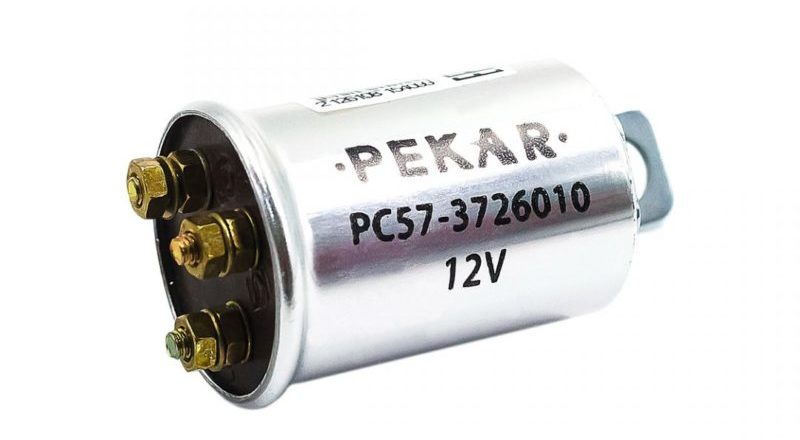
It is also possible to connect a control lamp. It is installed on the instrument panel and repeats the state of the turn signal lamps. On the same principle relay PC410 works, but it does not have a separate output for the control lamp.
The disadvantage of the breaker is short life and high heating during operation. Therefore, the relay is incapable of continuous switching, and it is impossible to build an alarm system on it - the device will quickly fail. Therefore, in more modern cars an electronic relay is used - PC590 or its analogues. Several modifications of this device were produced.
| Relay | Peculiarity of application |
|---|---|
| PC590 | For vehicles with a trailer |
| PC590B | For vehicles without side turn signal indicators |
| PC590K | For cars without trailer |
| PC590E | For Moskvich-2140 cars with dual-mode signaling system - when parking lights are on (in the dark) the brightness of turn signals was reduced |
| PC590I | For Moskvich-2140 with dual-mode signaling and a trailer |
| PC590P | For trailers |
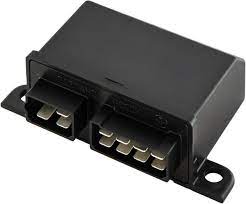
Also produced a series of relays PC951 for cars with onboard 24 volt.
As the range of electronic components evolved, turn relays began to be built on a new base, and the number of varieties grew avalanche-like. Thus, one of the handbooks on the device and repair of electronic devices of cars, published in 2003, contains more than 30 types of breakers. Their structural diagram is the same:
- a master oscillator;
- power amplifier (relay or transistor);
- service circuits (lamp status control, etc.).
All the devices are connected to the on-board power supply through alarm blocks. The generated pulses are fed to the lamps via the turn signal switch. For example, there is a scheme of turn signals on the relay 495.3747 in the scheme of the car VAZ-2110.
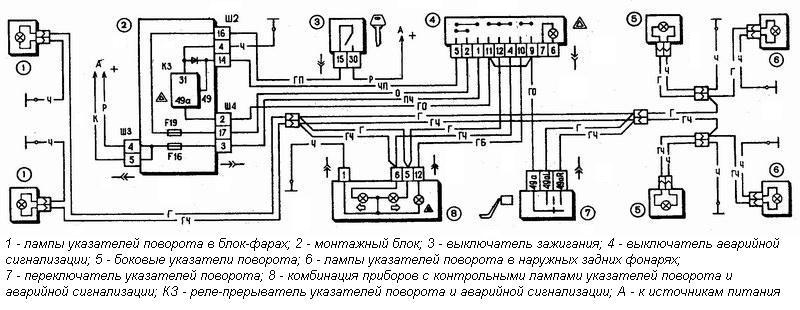
The breaker is based on a chip UR1101XP32 (full analogue of ASXP193, a functional analog of U2043 by TEM1C).
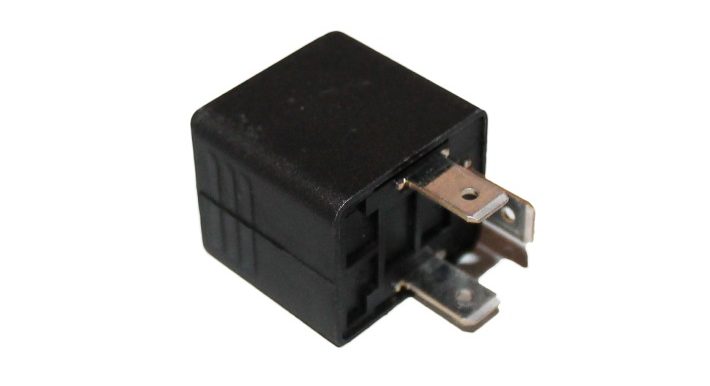
The wiring diagram of the turn signals via an electronic relay varies from car to car, to check the functionality and to replace faulty elements you need to analyze the electrical design of the particular car.
Recommended for viewing: Simple relay of two components.
Turn signal relay pinout
The pin assignment of the PC57 relay is shown in the figure. The B terminal supplies 12 volts from the car's onboard power system, and the SL terminal supplies the signal for the lamps. Control lamp is connected to the terminal CL.
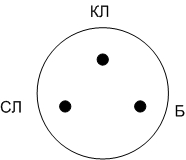
With the PC950 the pin markings are printed directly on the housing. Sometimes because of a layer of dust or dirt it is impossible to read the markings. In this case it is necessary to wipe the housing of the device.
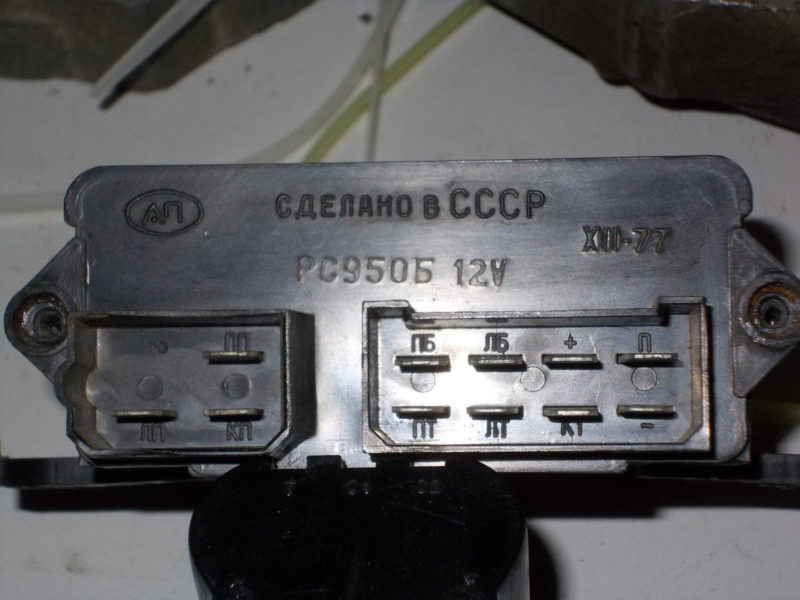
Read also: Wiring Diagram for Headlights via Relay
In modern turn signal relays pinout can be different, but still manufacturers are striving for a single standard (with varying degrees of success). It is better to check the pinout of such devices in the reference books.
According to the results of one of the surveys conducted by the traffic police, About 20% of all accidents were caused by failure to signal the turn signals. Keeping your turn signals in good working order and using them when required by the DMV will reduce the likelihood of an accident by about that number.
